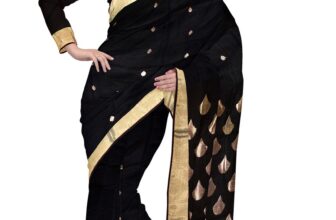
What exactly is Henna?
In botanical terms, henna, also known as Lawsonia inermis, is one of the major constituents in many commercial body and hair colors. Henna is classified into three types: black, neutral, and natural. It is one of the oldest plants, and the leaves are utilized for both beauty and health purposes.
Henna leaves have also been used for psychological and medical purposes, as well as for decoration, in North Africa and Asia since ancient times.
Henna is an evergreen plant that grows rapidly in tropical and semi-arid climates. Most people associate the Henna hair color with India because it is used in Indian weddings and other cultural ceremonies. Henna was used on hair after being used on the body for ornamentation. It is thought to bring the wearer good fortune.
[Click Here] Buy Home Grown Fresh / Dry Henna (Mehndi) Leaves
How does it work?
Henna contains compounds that may aid in the treatment of certain infections. There is also some evidence that henna may slow the growth of tumors, prevent or reduce spasms, reduce inflammation, and relieve pain.
Henna Distribution and Cultivation Process
The henna tree can reach a height of 3-4 m. Henna trees that are evergreen are most usually seen in warmer climates. Although it is unknown where the first henna was discovered, it is believed that it was discovered in Asia and spread to other parts of the world. Henna was first discovered in Pakistan and Western India, according to written data and biogeographical factors. Wild henna species can still be found in these areas.
Henna is typically grown via branch cutting. Planting stalks are about 30 cm long. Because of the high rainfall, the months of July and August are considered ideal for sowing henna stalks. Watering is essential in the early stages of growth following planting.
Soil with good drainage, no trees, and a drainage system is ideal for planting. On 0.1 hectares of commercial henna farm, 1000-1200 henna trees can be planted. The distance between each row should be 60 cm, and the distance between trees should be 30-45 cm. A sufficient amount of water, soap, and fertilizer takes 6-7 months to establish the plant and leaves.
Henna plants essential components
Lawson is a chemical found in henna leaves. When henna-pasted leaves are put into this solution, crimson coloration ensues. Aside from cosmetic applications, Henna has certain therapeutic properties. Henna includes several phytochemicals that enable the plant to withstand a variety of illnesses. Tannin, Saponin, Flavonoids, Alkaloids, Glycoside, Phenol, Anthraquinone, Fatty Acid, and other phytochemicals are found in henna.
Uses of Henna
Because of its therapeutic characteristics, henna can be used to treat a variety of ailments. The practical qualities of henna are employed by almost everyone in modern society, and no major drawbacks have been noted. However, specialist advice (in the case of therapeutic purposes) and scientifically formulated substances are required.
Some of the ways it can be prepared for use are as follows:
- Henna Powder: 1/2-1 teaspoon Henna Powder (Dried), Ginger Powder should be combined with honey. This mixture can be consumed after a meal.
- Henna Juice: Using a grinder or other contemporary equipment, fresh juice can be produced from the leaves. Mix this juice with 1-2 teaspoons of water or honey. This mixture should be eaten twice a day.
- Henna leaf paste: Combine henna leaf and rose water to make a thick paste. Apply the mixture to your forehead and keep it on for 10-15 minutes before thoroughly cleansing it. This application offers significant relief from mental weariness and headaches.
Benefits of Henna
It is highly beneficial in treating skin diseases and burning sensations. As a result, Henna leaf paste is used as a natural color or adornment for the hands and feet. It can also be used to relieve burning sensations in the hands and feet, as well as to treat headaches and skin diseases such as ringworm and scabies.
When used with Nilini (Indigofera tinctoria), it provides a safe and pitta-balancing natural dye, Internally, it can be used to treat a wide range of illnesses. It is used to relieve burning sensations in the body, as well as to relieve burning sensations while passing urine and in dysentery. It is also used to prevent or control diarrhea and internal bleeding, as well as to relieve fever and induce sleep.
Side effects of Henna Plant
- Only henna leaf juice that has been carefully made should be taken. Otherwise, it might cause stomach pain, muscle cramping, kidney problems, and red blood cell infections.
- In allergy sufferers, applying henna to the skin may result in an allergic reaction. This can also cause skin rashes, red patches, swelling, and other symptoms.
- Henna juice should be avoided by pregnant women.
- P-phenylenediamine is found in modest amounts in henna leaves. Dermatitis, eye irritation, asthma, asthma, asthma, and other disorders can be caused by P-phenylenediamine.
Conclusion
Henna application has long been a ritual in our culture. Not only on the occasion of Bihu, but also in many other social standards, and because of henna’s medicinal relevance, its application is seen in sickness cure. In today’s market, there is a significant demand for and price of henna-made products such as Henna Hair Dye, Mehndi design, Henna Powder, and so on.
[Click Here] Buy Home Grown Fresh / Dry Henna (Mehndi) Leaves
FAQs
- How can you tell henna leaves apart?
Henna leaves contain the red-orange dye lawsone, with the petiole containing the most dye concentration (the central vein). The petiole dye content is higher in young leaves. The dye concentration of older leaves is lower.
- Is henna safe for the skin?
Henna, a proven astringent, is used to minimize the indications of aging, wrinkles, and fine lines. It is also used to treat skin imperfections, dark spots, and scars. Because of its antiviral, antibacterial, and cooling characteristics, it can also be used to treat wounds, sunburns, and skin rashes.
- What are the advantages of the henna leaf?
Henna includes chemicals that may aid in the treatment of some infections. There is also some evidence that henna may slow tumor growth, prevent or lessen spasms, reduce inflammation, and relieve pain.
- Are henna leaves toxic?
Henna is harmful and should not be consumed. The color molecule in henna, lawsone, is capable of inducing alterations (mutations) in human DNA and chromosomes. As a result, lawsone is a mutagen. Because mutations can result in cancer, mutagens are most certainly carcinogenic.
- Does henna cause white hair to grow?
While putting henna on your hair on special occasions can make it seem beautiful, it also works wonders against greying hair.





